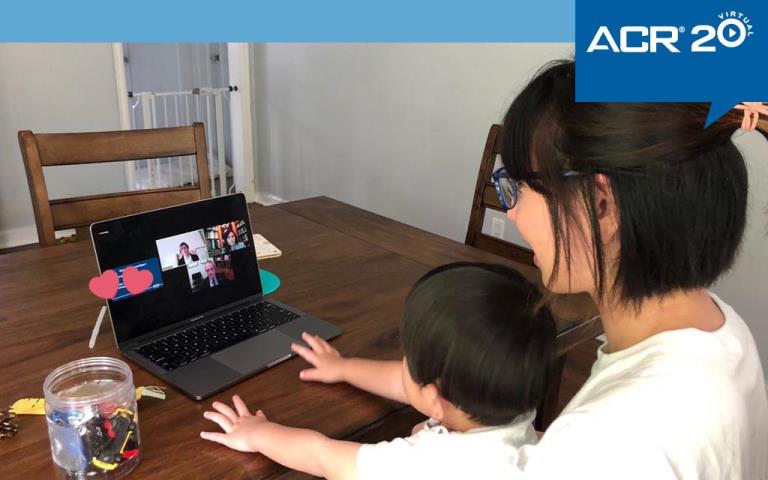ACR 2020 kicked off with a discussion on the challenges faced by women in radiology during the COVID-19 pandemic. At the American Association of Women in Radiology(AAWR) 2020 Online Caucus, panelists recounted experiences shared by many in this unprecedented crisis, as well as some developments that are unique to women.
Pausing Progress
Elizabeth K. Arleo, MD, immediate past president of AAWR, kicked off the session by discussing the now-tabled Paid Family and Medical Leave Act (PFMLA). Arleo announced that the AAWR submitted a historic resolution to the ACR on Feb. 17 for PFMLA in private radiology practices. It was the culmination of a lot of time, work, and effort — and then the world turned upside down.
COVID-19 hit, and suddenly everyone needed to reassess. The decision was made to defer voting and withdraw the proposal for consideration this year. “In a sad Catch-22 situation, more people now than ever need paid family leave,” Arleo said. “It’s disappointing to postpone it, but the decision was made by AAWR leadership and advisors that it’s the correct thing to do, given the pandemic. We’re hopeful we can bring the resolution to the floor next year.”
Weathering the Storm
“The number one word: uncertainty.” Kirti Magudia, MD, PhD, an abdominal radiology fellow at the University of California-San Francisco, summed things up succinctly when she talked about navigating life as a working mother of two young children and wife to a husband who is an emergency physician and, therefore, cannot work from home. Panelists discussed the various challenges they’ve come up against throughout the last few months, including issues such as PPE shortages, financial strains, availability of home workstations and testing kits, and maintaining proper socially distanced safety protocols in hospitals and practices. They agree everyone is suffering, but it seems to be even harder for women.
The number one word: uncertainty.
“Working moms have a lot of added stress,” said Shadi A. Esfahani, MD, MPH, an abdominal radiology fellow at MGH. She noted impacts on breastfeeding mothers and difficulties they may experience with proper social distancing and cleanliness in lactation rooms. “There’s also the impact on first-year residents and medical students to consider,” Esfahani said. “Their physical rotations have been canceled, so we’ll need more pipelines to encourage students and women to explore radiology.”
Panelists also spoke of increased workloads for women, while productivity has decreased. “Women’s productivity has gone down, in research especially,” said Anna Lee, MD, a radiation oncology fellow at Memorial Sloan Kettering Cancer Center, who noted that papers with women as first authors have gone down since the pandemic began.1 Lucy B. Spalluto, MD, MPH, vice chair of health equity in the department of radiology at Vanderbilt University, estimates this is likely due to greater demands on women at home when it comes to child or elder parent care. Spalluto finds she is constantly busy, doing most of her research and academic work at night and on weekends. “Think about how much people’s workloads have increased with domestic care during the pandemic, particularly women’s,” she said. “Reports state that of families with two working parents, women are disproportionately bearing the burden of the domestic work, up to 20 hours more per week than men.”2,3,4

